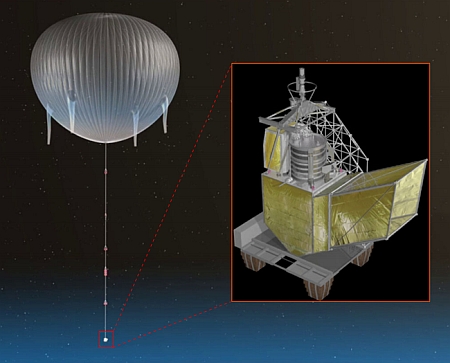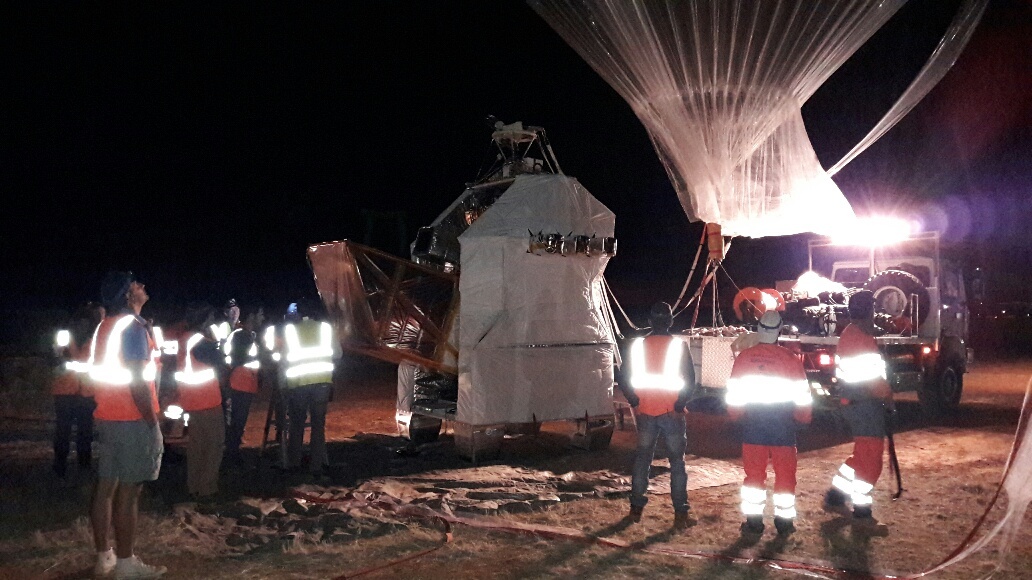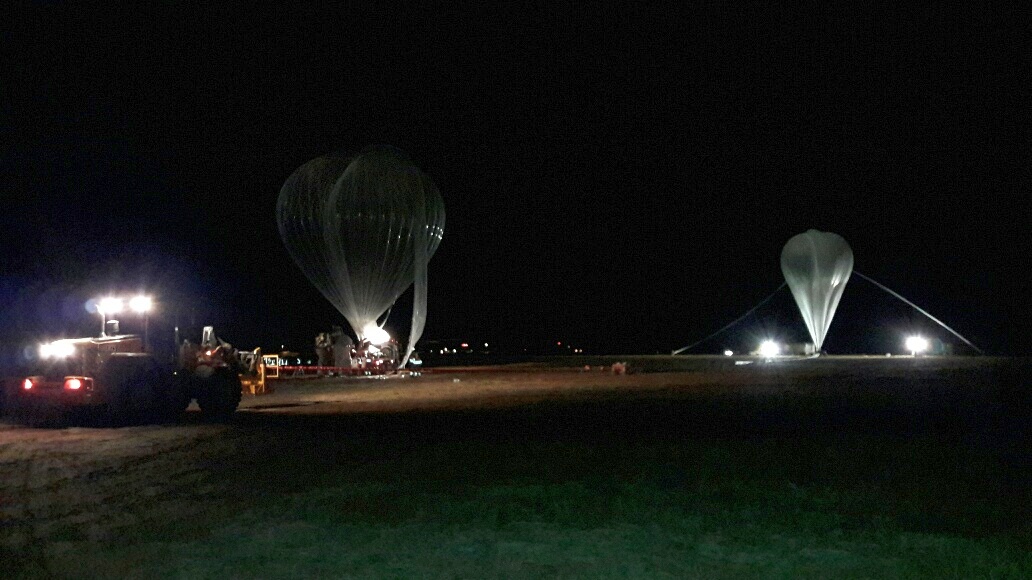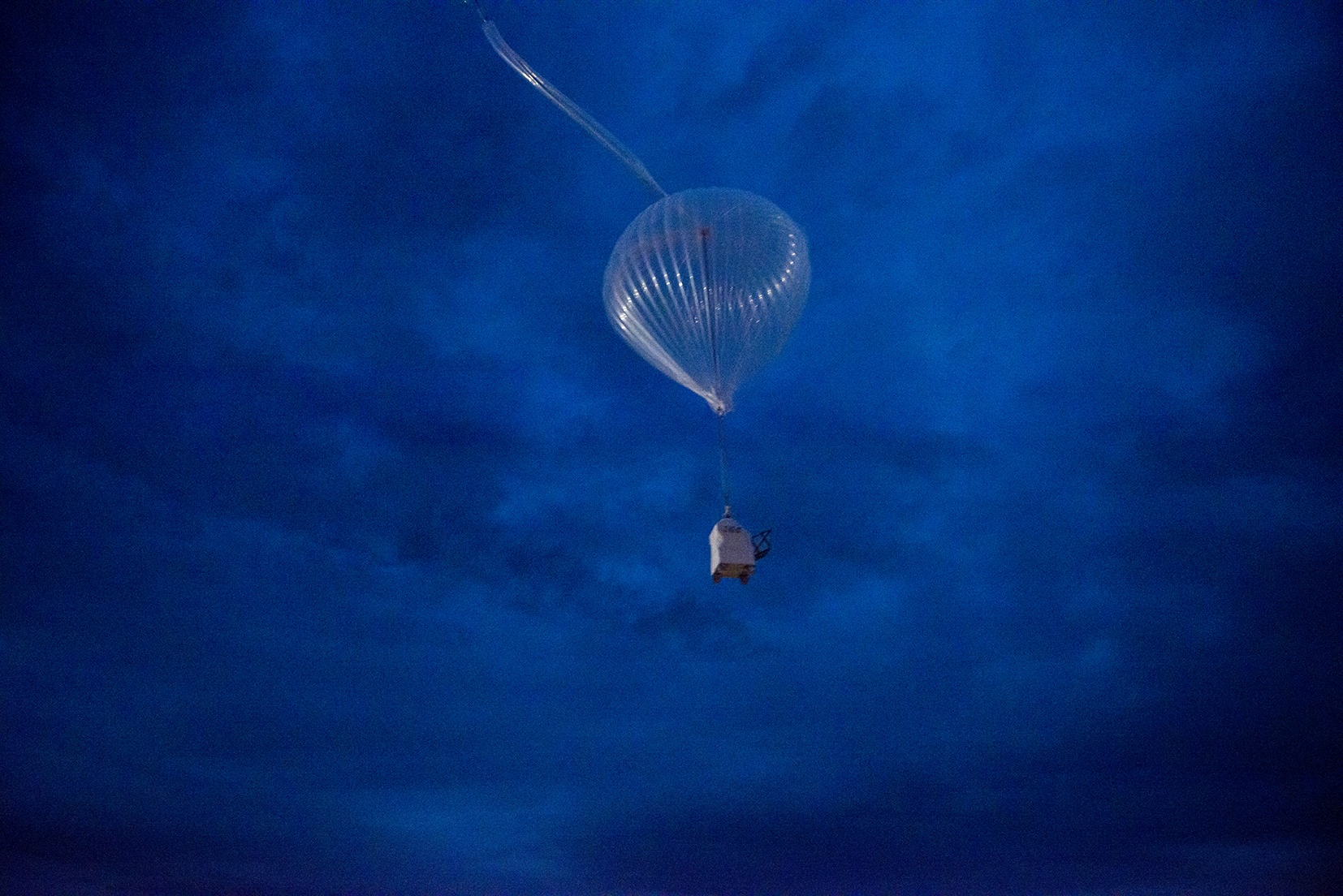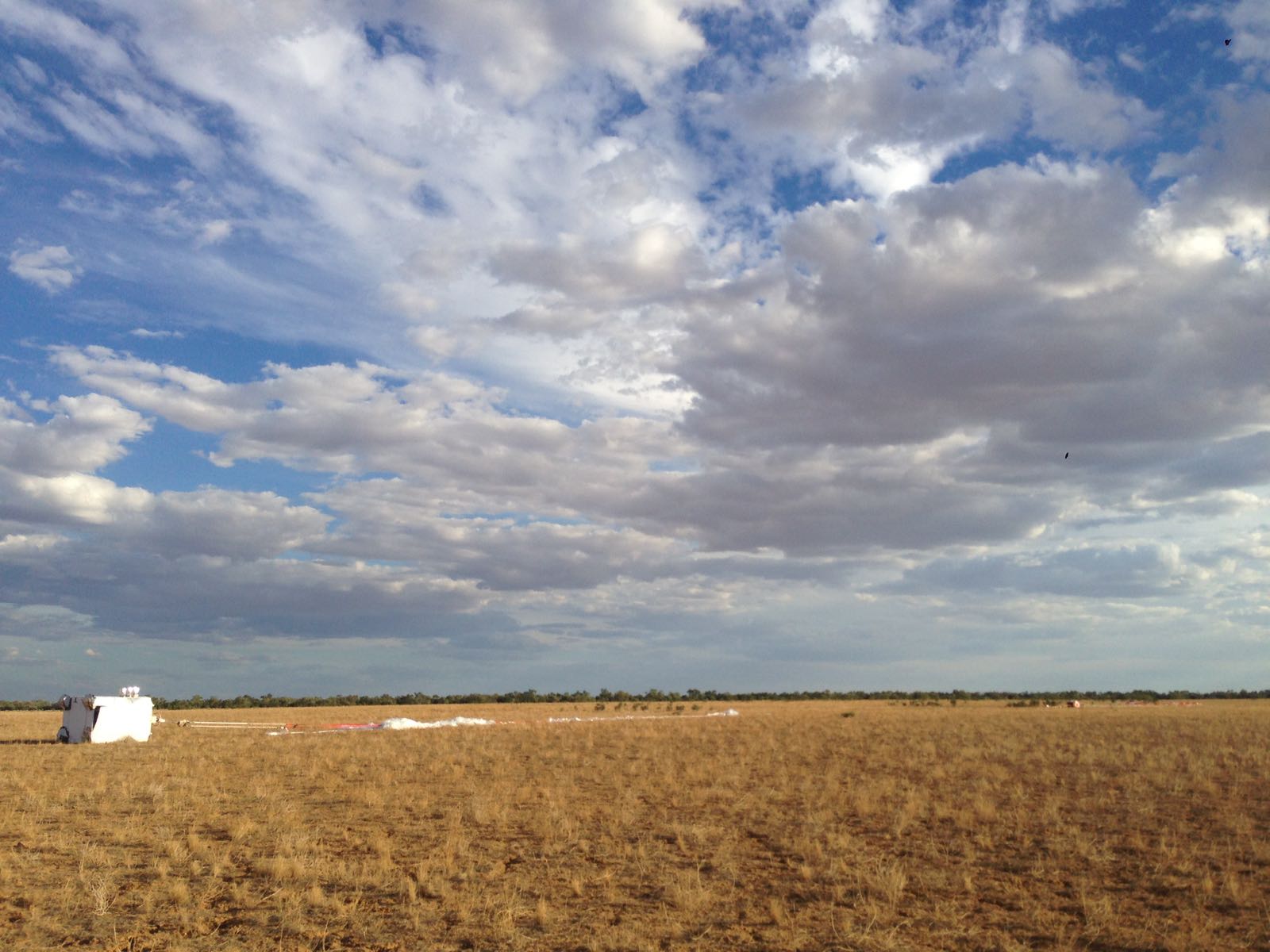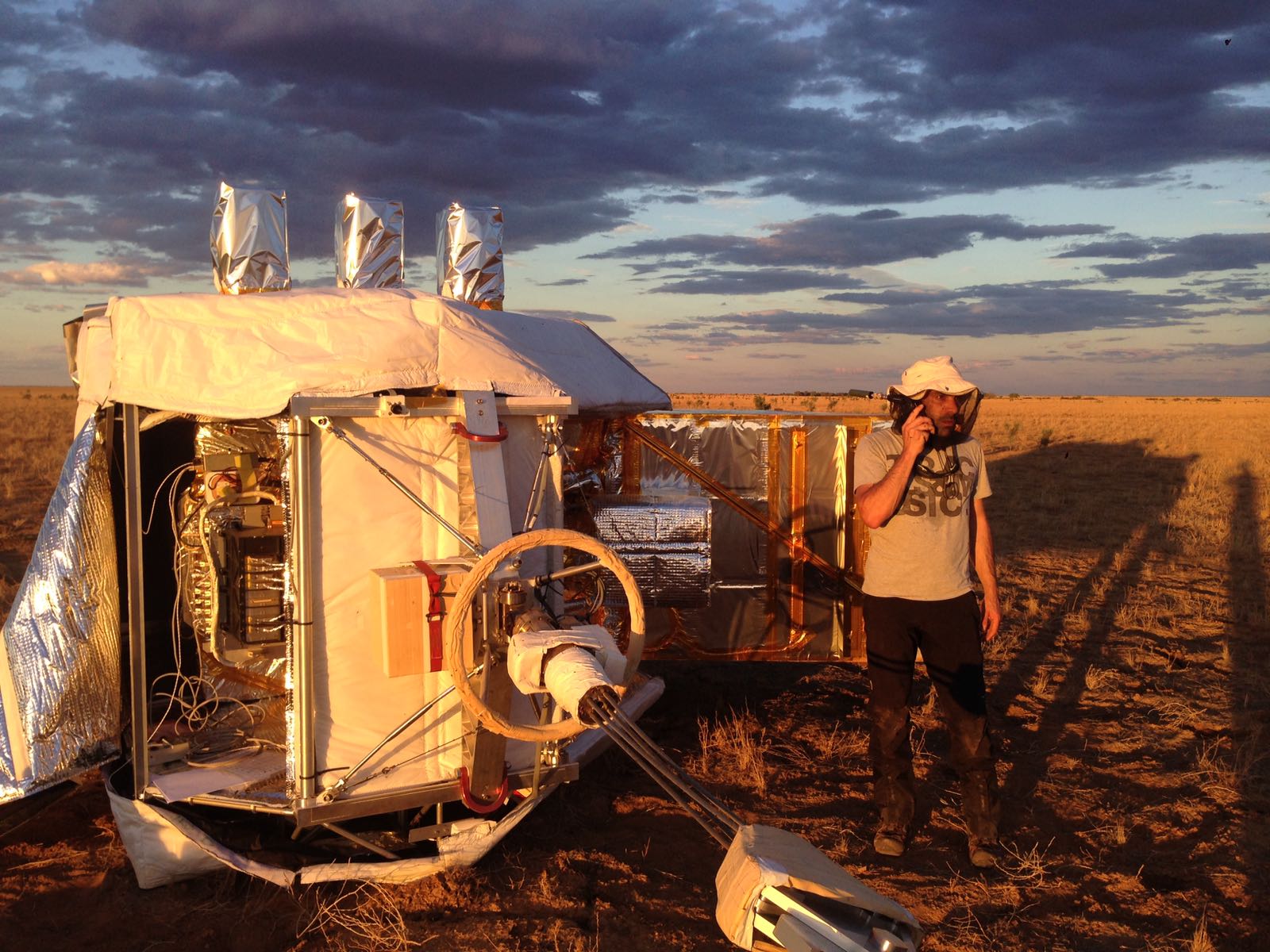Purpose of the flight and payload description
The Polarized Instrument for Long-wavelength Observation of the Tenuous interstellar medium (PILOT) is a balloon-borne experiment that aims to measure the polarized emission of thermal dust at a wavelength of 240 µm (1.2 THz). PILOT is an international project that involves several European institutes. The institutes that have contributed to hardware developments for PILOT are IRAP and CNES in Toulouse (France), IAS in Orsay (France), CEA in Saclay (France), Rome University in Rome (Italy) and Cardiff University (UK). At left we can see an scheme of the instrument (click to obtain an enlarged and detailed version) while below there is a brief description of its elements.
The optics of the instrument are composed of an off-axis paraboloid primary mirror (M1) with diameter of 0.83 m and an off-axis ellipsoid secondary mirror (M2). The combination respects the Mizugushi-Dragone condition to minimize depolarization effects. All optics following M1, including M2, are cooled at cryogenic temperature of 2 K.
Following the Gregorian telescope, the beam is folded using a flat mirror (M3) towards a re-imager and a polarimeter. Two lenses (L1 and L2) are used to re-image the focus of the telescope on the detectors. A Lyot-stop is placed between the lenses at a pupil plane that is a conjugate of the primary mirror. A rotating Half-Wave Plate (HWP), made of Sapphire, is located next to the Lyot-stop. The bi-refringent material of the HWP introduces a phase shift between the two orthogonal components of the incident light. A polarization analyzer consisting of parallel metallic wires is placed at a 45º angle in front of the detectors, in order to transmit one polarization to the transmission focal plane and reflect the other polarization to the reflection focal plane.
Each of the focal planes include 1024 bolometers in 4 arrays of 16 X 16 pixels. They are cooled to 300 mK by a closed cycle 3He fridge. The detectors were developed by CEA/LETI for the PACS instrument on board the Herschel satellite.
In order to reconstruct the pointing of the instrument, PILOT counts with the Estadius stellar sensor developed by CNES for stratospheric applications. This system provides an angular resolution of a few arcseconds, which is required to optimally combine observations of the same part of the sky obtained with various polarization analysis angles. A key feature of Estadius is that remains accurate even with fast scan speeds. An internal calibration source is used inflight to calibrate time variations of the detector responses. The source is located behind mirror M3 and illuminates all detectors simultaneously.
PILOT is carried to the stratosphere by a generic gondola suspended under an open stratospheric balloon through a flight chain. PILOT uses a 803Z class balloon, with a helium gas volume of 800.000 m3 at ceiling altitude. The instrument can be pointed towards a given sky direction using the gondola rotation around the flight chain and rotation of the instrument around the elevation axis. Scientific observations are organized into individual observing tiles during which a given rectangular region of the sky is scanned by combining the azimuth and elevation rotations.
Details of the balloon flight
Balloon launched on: 4/16/2017 at 15:50 utc
Launch site: Australian Balloon Launching Station, Alice Springs, Australia
Balloon launched by: Centre National d'Etudes Spatiales (CNES)
Balloon manufacturer/size/composition: Zero Pressure Balloon model 803Z Zodiac 800.000 m3
End of flight (L for landing time, W for last contact, otherwise termination time): 4/17/2017
Balloon flight duration (F: time at float only, otherwise total flight time in d:days / h:hours or m:minutes - ): 33 h 40 m
Landing site: Diamantina Lakes National Park, Queensland, Australia
Campaign: AUSTRAL 2017
The balloon was launched from the Australian base of Alice Springs on April 16, 2017 about 6:20 local time using the auxiliary balloon method. After a nominal climbing, it reached an altitude of 39.5 kms which was maintained during the diurnal part of the flight, while the balloon moved west. At night, this altitude was a little bit lower -about 32 km- due to the cooling of the helium and the subsequent loss of bouyancy.
The mission was terminated around 15:20 local time on April 17, totalizing 33 hours and 40 minutes of flight, which sets a new duration record since the introduction of the new CNES control balloon systems in 2013.
The gondola was recovered about 850 km east of the launch site in a desert area. It was brought back to the Alice Springs base using a helicopter and a truck. The gondola and the instrument suffered no major damage from landing or recovery, which was later confirmed by a thorough inspection following the return of the instrument to France.
The flight trajectory was eastward during most of the flight so to maintain link with the balloon were used two telemetry antennas located in Alice Springs and in Longreach.
This was the second flight of the instrument. The flight lasted approximately 33 hr, during which 24 hr of scientific observations were obtained.
Out of the eight bolometer arrays, array #1, #3 and #5 were not operational during the flight for similar reasons as during flight #1
Apart from the Orion molecular cloud and planets, all targets observed during this mission were unique to the southern hemisphere. Were mapped two regions along the inner Galactic plane near the Galactic center (L0) and near l = 30º (L30). Also were obtained maps of several known molecular clouds. A large integration time was allocated to map a fraction of the Large Magellanic Cloud and also were obtained long measurements of the field observed by the BICEP2 ground experiment in order to attempt constraining the polarization properties of dust in a region of low Galactic foreground.
Postal cover issued on launch day commemorating the flight
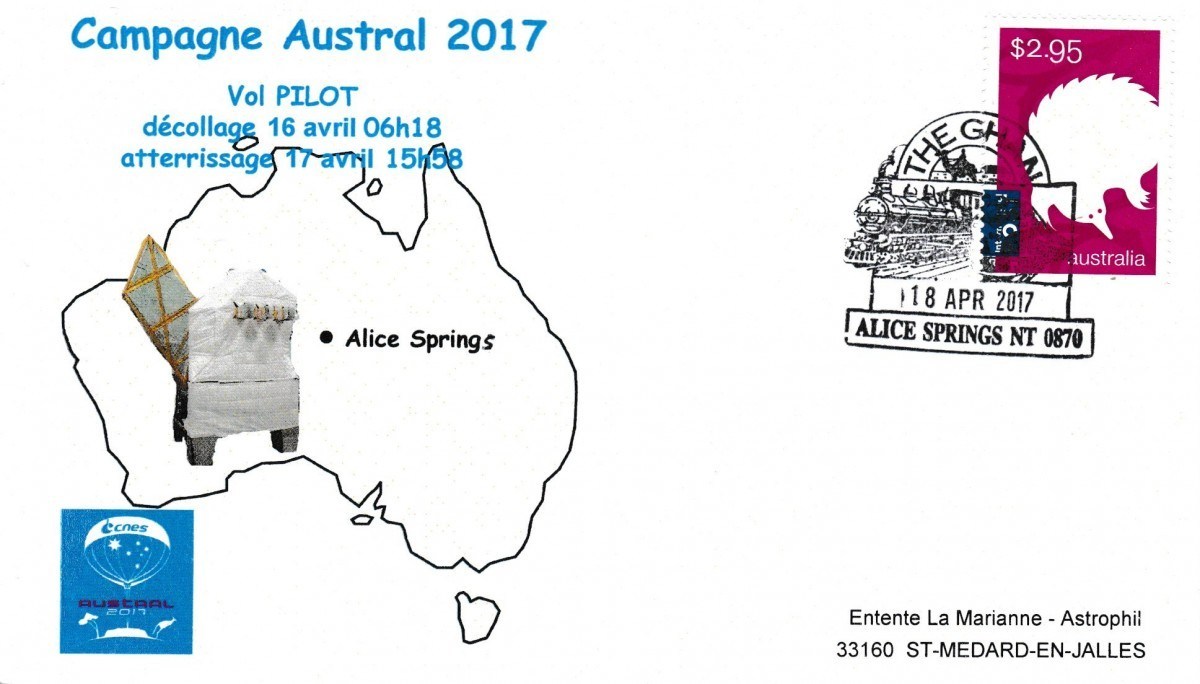
External references
- PILOT project website Centre National des Etudes Spatiales (CNES)
- PILOT project website Institut de Recherche en Astrophysique et Planétologie (IRAP)
- Des ballons stratosphériques : pour quoi faire ?
- Inflight performance of the PILOT experiment PH.D. Thesis by Gabriel Foënard, Université Paul Sabatier, 2018
13727If you consider this website interesting or useful, you can help me to keep it up and running with a small donation to cover the operational costs. Just the equivalent of the price of a cup of coffee helps a lot.

